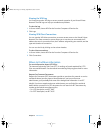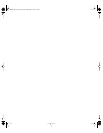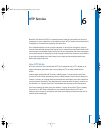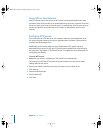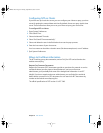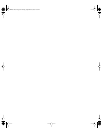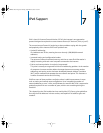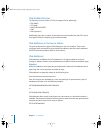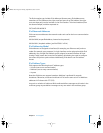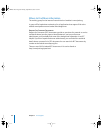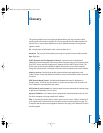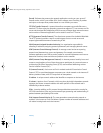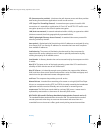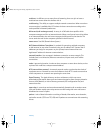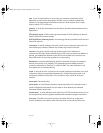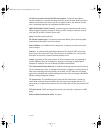
Chapter 7 IPv6 Support 85
The final notation type includes IPv4 addresses. Because many IPv6 addresses are
extensions of IPv4 addresses, the right-most four bytes of an IPv6 address (the right-
most two byte pairs) can be rewritten in the IPv4 notation. This mixed notation (from
the above example) could be expressed as:
E3C5:4AC8:192.168.100.32
IPv6 Reserved Addresses
IPv6 reserves two addresses that network nodes can’t use for their own communication
purposes:
0:0:0:0:0:0:0:0 (unspecified address, internal to the protocol)
0:0:0:0:0:0:0:1 (loopback address, just like127.0.0.1 in IPv4)
IPv6 Addressing Model
IPv6 addresses are assigned to interfaces (for example, your Ethernet card), and not
nodes (for example, your computer). A single interface can be assigned multiple IPv6
addresses. Also, a single IPv6 address can be assigned to several interfaces for load
sharing. Finally, routers don’t need an IPv6 address, eliminating the need to configure
the routers for point to point unicasts. Additionally, IPv6 doesn’t use IPv4 address
classes.
IPv6 Address Types
IPv6 supports the following three IP address types:
• Unicast (one to one communication)
• Multicast (one to many communication)
• Anycast
Note that IPv6 does not support broadcast. Multicast is preferred for network
broadcasts. Otherwise, unicast and multicast in IPv6 are the same as in IPv4. Multicast
addresses in IPv6 start with “FF” (255).
Anycast is a variation of multicast. While multicast delivers messages to all nodes in the
multicast group, anycast delivers messages to any one node in the multicast group.
LL2351.Book Page 85 Monday, September 8, 2003 2:47 PM



